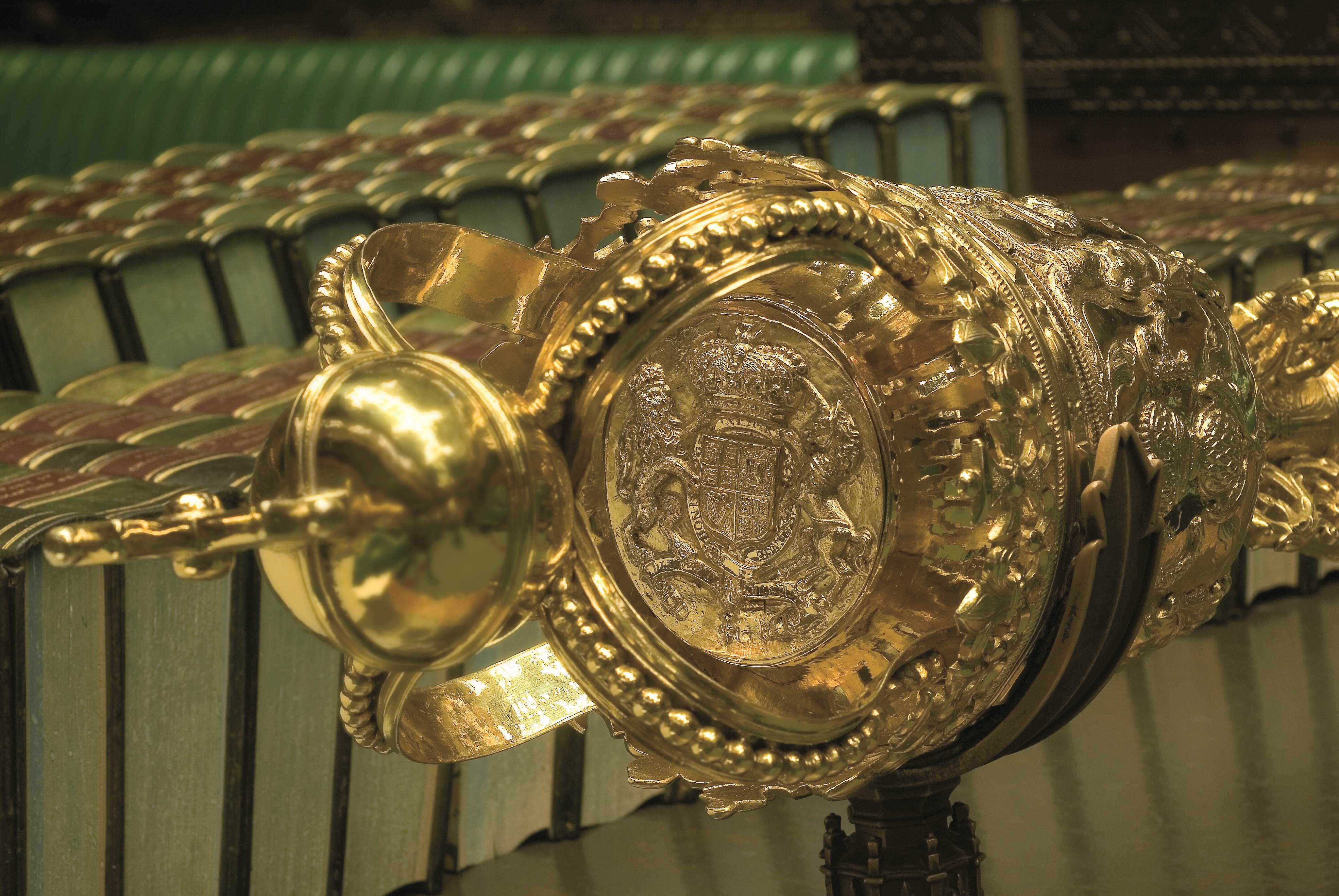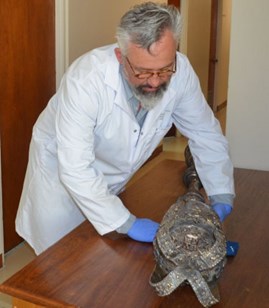Contact Us
Tel: (+44-20) 7799-1460
Fax: (+44-20) 7222-6073

Thursday 6 May 2021
Blog Post by Matthew Salik, Head of Parliamentary Development, CPA
The views and opinions expressed in this blog post are not the responsibility of the CPA Headquarters Secretariat and should not be attributed to any Parliament or parliamentarian.
2021 is the 110th anniversary of the establishment of the Commonwealth Parliamentary Association (originally the Empire Parliamentary Association). As is typically the case in such circumstances, organisations consider rebranding or tweaking existing branding to reflect such important milestones. Of course, the CPA is no different. For 2021, we have a shiny new anniversary logo which retains the mace as a key component (see below), keeping with our history and tradition. But this has got me thinking. Isn’t it odd that the CPA’s branding should be a medieval weapon and by virtue, should parliaments, who make up the CPA, have such symbols in a modern context? How did these rather barbaric weapons become a symbol of the authority of parliaments and shouldn’t such anachronistic emblems be replaced with objects that have less of a colonial and militaristic connotation?



Well first of all it's important to stress that maces, or at least the maces used by many Commonwealth parliaments are not weapons in the sense of a metal club with bristling spikes. Nor have maces always been associated with violence. Actually, ceremonial maces don’t even originate in Europe. Interestingly, ceremonial maces have been in existence from the Stone Age and were used in Ancient Egypt, Babylonia and beyond. These maces like their modern counterparts were used to symbolise the authority of a chieftain or community leader for religious or civic purposes. They would, as today, be carried in a procession ahead of such leaders to demonstrate to witnesses the power and authority of such a leader.

Nevertheless, in the Commonwealth context the parliamentary ceremonial mace does originate from the medieval weapon. Oddly enough the mace we see today is in fact upside down. The historically dangerous bit of the mace is now at the bottom. In the late Middle Ages, the royal symbol went from being at the bottom to be given more prominence and held at the top. It also evolved into more ornate decorative objects of wealth, power and status.
To some extent the origins of having maces in Commonwealth parliaments emanates from the UK Parliament. In the UK Parliament's case, maces (there are three, one for the House of Commons, two for the House of Lords) were historically carried by the monarch’s bodyguards, the Sergeant at Arms. To this day, those maces remain part of the crown jewels (there are 13 maces all together) and thus symbols of the Crown. Across the Commonwealth, Sergeants at Arms and Black Rods still carry the mace to demonstrate royal authority within parliaments. Which is why in many cases the Chamber session cannot begin without the mace being in place. However, the royal authority of the mace only applies today in those jurisdictions that still have the UK Crown as their Head of State. In other Commonwealth parliaments, the mace symbolises the people’s authority and that of parliament itself.

Speaker's Procession, Senate of Canada
However, we’d be foolish to think these maces are benign peaceful objects. Oh no! Ceremonial parliamentary maces have been used for violent means. In 1965, on Black Tuesday the mace of The Bahamas Parliament was thrown through the window of the Chamber by an opposition member, and in 1976, the (now) Lord Heseltine picked up the UK House of Commons Mace and swung it in the air in protest to a breaking of a pairing agreement. Such manhandling of the mace happened again in 2018 and strangely made the news across the world. The global controversy came about because of the universality of the use of the parliamentary mace coupled with the importance of such a sacrosanct symbol of parliament.

Religious organisations, academic institutions and local authorities also use the mace as a symbol of authority, so it is in no way unique to parliaments. Interestingly, the Commonwealth Youth Parliament has also adopted a ceremonial mace as an emblem of its (perhaps fictional) authority. However, in this case it isn’t a mace at all, but a ceremonial paddle. The cedar paddle was carved by the Kwakwaka’wakw First Nation community of British Columbia, Canada. Much like the symbolism of a ceremonial mace, the blade of a paddle which depicts a wolf represents transportation, the sea and life’s journey. This is particularly poignant when it comes to the journey of life for young people. And why it's such a great totem for a youth parliament.
The CPA of course uses the mace because our parliamentary members do. The use of the mace in the logo has been in existence since the 1960’s (see top logos). It depicted the CPA name above a crossed parliamentary Mace and Rod on a heraldic shield. When the latest version of the logo was instituted in 2002 it was felt that “the logo combines the best elements of traditional and authoritative parliamentary symbolism.” I couldn’t put it better myself!
There is a tradition within the Commonwealth and CPA network of donating furniture and other items including parliamentary maces from one Commonwealth parliament to another. For example, the parliamentary mace in the Australian House of Representatives, which is made of gilded silver, was presented by a delegation of Members of the UK House of Commons on a visit to Canberra in 1951 and the mace used by the Samoa Parliament was donated to the House by the UK Parliament in 1974.

1787 Parliament of Jamaica Mace before its restoration
In fact in 2019, the CPA helped the Parliament of Jamaica restore its mace which dates back as far as 1787. There are many other examples in the Commonwealth and this demonstrates the close relationships between parliaments and legislatures in the Commonwealth.

Personally, I think that like the CPA, parliaments should continue to use the ceremonial mace, where they already exist or like the Commonwealth Youth Parliament a totem or emblem that has meaning that can resonate with the people of that jurisdiction. It doesn’t really matter ultimately where the symbol originated from, or indeed if it was once a tool of violence so long as it has a positive and meaningful identity today, and of course, in the future. After all the Mozambique flag has an AK-47 on it, just as the Kenyan flag has Maasai spears and shield. These are powerful and important symbols.
But one thing is for sure, there is something nice about Commonwealth parliaments having a shared symbol creating a symbolic synergy of history, which is of course encapsulated by the CPA using such an emblem in its logo. A microcosm of shared ideals, principles, and desire to work together to create stable and respected democratic parliamentary institutions.

List of illustrations: